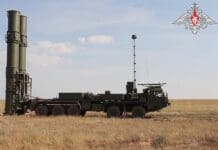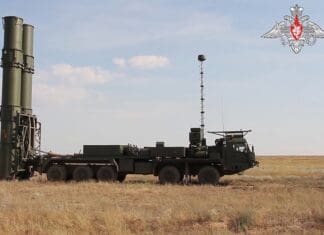This post is also available in:
 עברית (Hebrew)
עברית (Hebrew)
Prisons and correctional facilities have unique security challenges that other enterprises typically do not have. In addition to traditional security concerns such as perimeter surveillance, ID card management, visitor and vendor management, crime, and theft, prison facilities challenges include inmate escapes, hostage situations, gangs, contraband, riots, and overcrowding, in addition to increasing privacy and regulatory mandates.
Security teams must always be on guard and watching every individual and action of the inmate population – for an inmate’s physical safety.
An emerging concern for prison officials is drones by individuals who are looking to smuggle drugs, cellphones, weapons, and other contraband into prisons for use by inmates.
Video surveillance is a necessary security technology for prison and correctional facility staff, as it allows personnel to mitigate those unique security challenges.
Increasingly, prisons and correctional facilities are upgrading their older analog video systems, due to age degradation and lack of adequate support resources. “They are upgrading to hybrid and/or fully digital solutions, all while maintaining the Human Machine Interfaces (HMI) model,” says Brad Wareham, Director of Key Accounts at Salient Systems. Specific benefits that advanced video surveillance and VMS solutions can provide a correctional institution include, according to securitymagazine.com:
Increased Coverage – Many prisons and correctional facilities are large, and have multiple areas that need to be under surveillance, such as hallways, throughout cellblocks, healthcare facilities, dining areas, exercise yards, and more. Outdated systems may have a difficult time monitoring all areas, while an IP video system can provide continuous coverage of an entire facility.
Clarity of Video – Older analog cameras struggle with the ability to provide clear images. New IP cameras, coupled with an advanced VMS (video management systems), will produce crisp and clear images that are necessary to mitigate security risks.
Inmate Tracking – One of the biggest benefit of a VMS solutions is video analytic software, which is capable of tracking a moving target and searching for specific objects. Video analytics can count human beings, monitor queues, and even identify a geographical location. VMS solutions allow security to search video archives quickly and find archived video that matches custom criteria within minutes, which is helpful in investigations.
Alerts – Video analytics within a VMS solution can be programmed to detect specific activity and activate an alarm or alert system when the activity occurs.
Facial Recognition – The ability to recognize a face is another key benefit of a VMS solution used in a crowded correctional institution, in particular when inmates may be wearing the same type and color of clothing.
Perimeters – Video surveillance placement on the exterior perimeter of a facility can document suspicious activity occurring in outside recreational yards where contraband can enter. Many VMS solutions allow for detecting movement throughout specific areas for an established duration of time.
Mobility: The ability for correctional officers to view video on a mobile device is critical, given the large landscape of facilities. For example, Salient’s TouchView Mobile solution, combined with its CompleteView 20/20 VMS, allows users to instantly access, monitor and review live and recorded video from any camera connected to any CompleteView 20/20 recording server. Cameras from multiple servers can be accessed simultaneously with PTZ control.
Advances in video analytics are undoubtedly an important contribution to the enhancement of prison security.
Learn about the latest technologies at the Video Analytics 2019 conference and exhibition on December 19, 2019. Register!
For details, booth/sponsorship: [email protected] +972-054-6742036


























